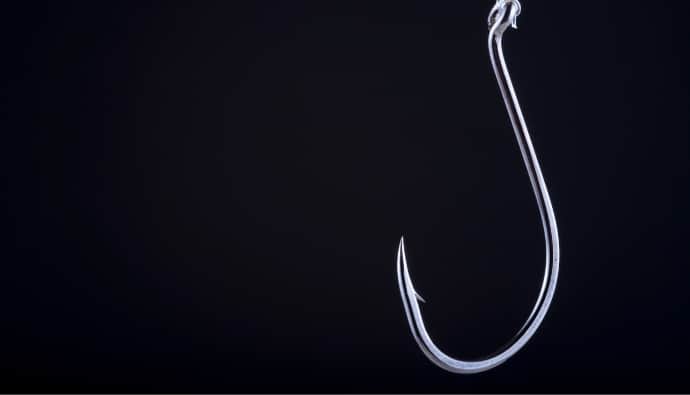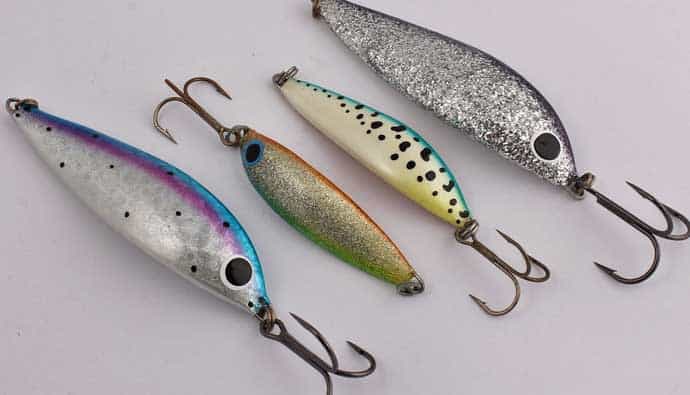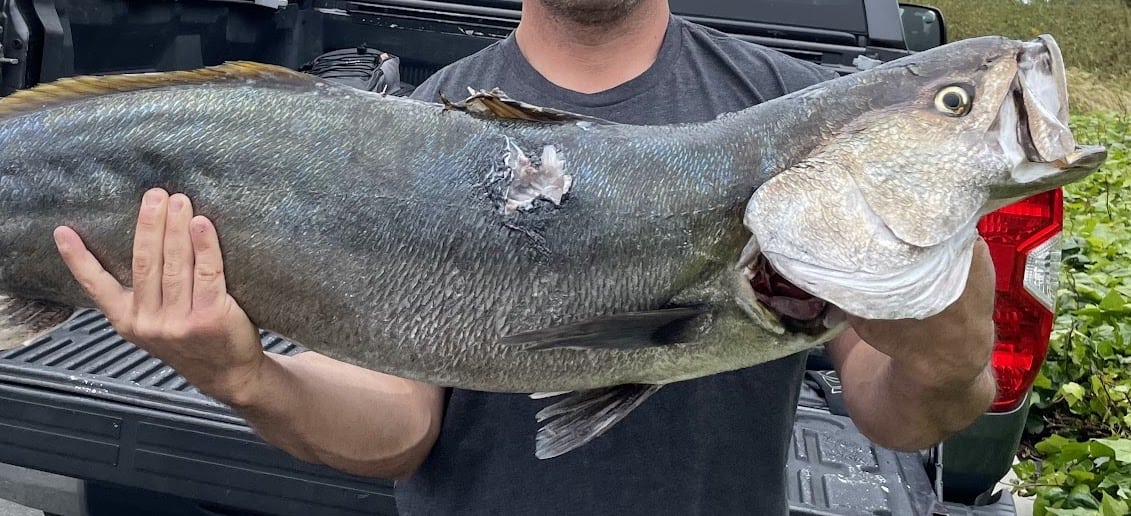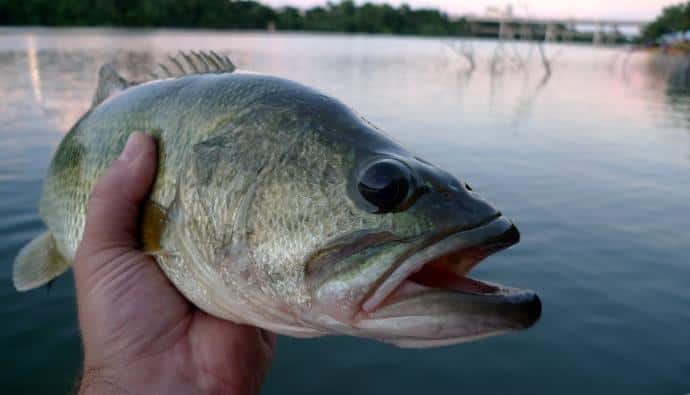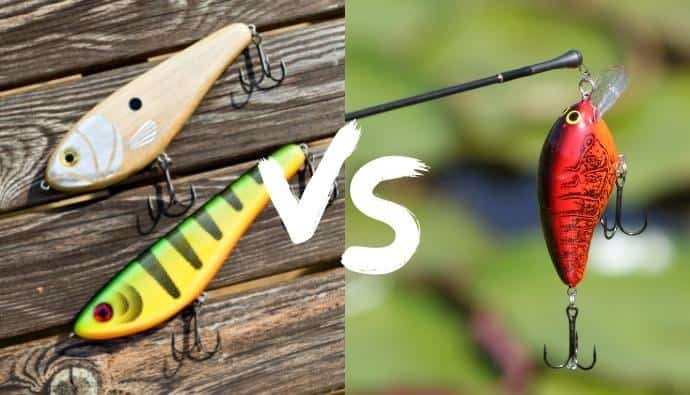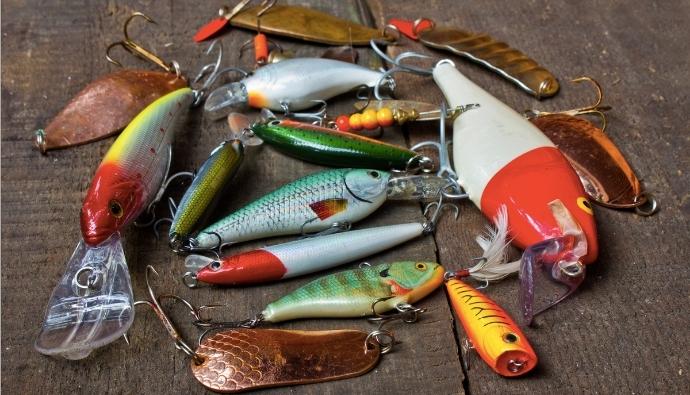Fishing is a great sport to participate in. Nonetheless, there are various fishing techniques and lures that you should be made aware of.
One of which is a spinnerbait; it is a baitfish-imitating lure and is well-known for creating aggressive reaction strikes from many fish species. Thus, just like any other fishing lure, a spinnerbait needs to be tied correctly. So how do you tie a spinnerbait?
Whether you’re a professional angler or a total beginner, this article will walk you through the process of tying your spinnerbait. Furthermore, we’ll cover everything from tying techniques to tying special spinners. Keep on reading!
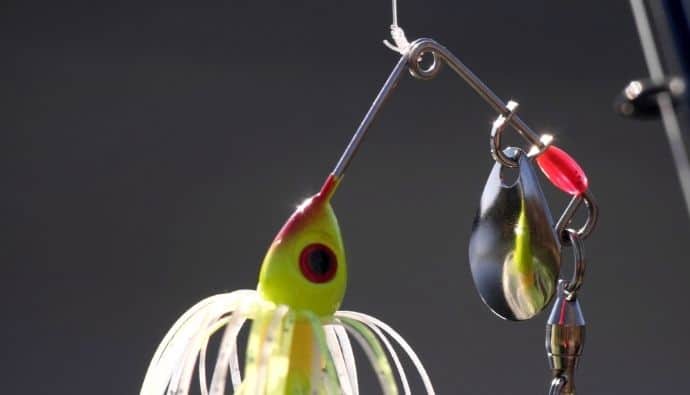
Parts of a Spinnerbait
Before we start tying our bait, you need to familiarize yourself with its parts. Knowing this will help you navigate through the spinnerbait.
Blade
The blade is the part that shines and glistens through as light passes the water. For this reason, spinnerbait is mostly used in murky waters.
This is attached to a swivel which allows either the blade or the wireframe to spin.
Wireframe
The wireframe is the slimmest part of the bait. It is pretty much the body that makes up the form of a spinnerbait. Thus, the area farthest from the hook is called the wire arm.
Eye / Attachment area
This is where you are supposed to tie your fishing line knots. Most of the time, these are R-shaped, but some designs introduce a loop to fixate the line.
Jig
This is an artificial bait that comes in varied shapes, colors, weights, and sizes. Jigs are weighted for it to sink, opposed to floaters that maintain a visual reference as to where bait currently is.
Hook
The hook is the sharpest part of a fishing lure that pierces the fish’s jaw.
Spinner Bait Knots
Spinnerbait lures are quite popular because of their versatility. It is generally considered one of the most effective methods of attracting fish.
Furthermore, this method involves tying it to the blade or attaching it with a line to create a sound that attracts your catch. So, unless it is tied properly, it will be hard to catch fishers.
Nonetheless, there are plenty of knot options to choose from, and below are as follows:
The Clinch Knot
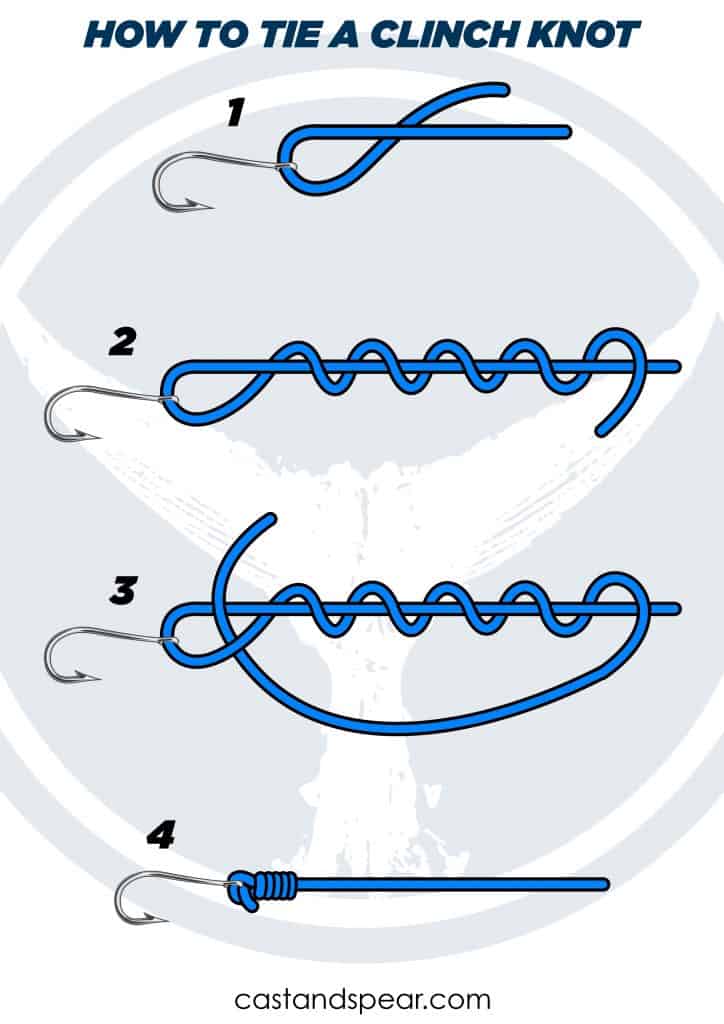
Clinch Knot is the easiest of all knots and the most common way to tie spinnerbait lures. The Clinch is one of the best monofilament knots because they hold well against strain. Here’s how you can do it:
First, hold the lure by the wire arm with one hand and the other hard with the end fishing line. We can call this a tag.
Next, pass the line through and pull it over the eye. By this time, the line end should be between your thumb and pointer finger, and the rest of it should be between your other fingers. After that, hold the blade with your other hand.
The fishing line and the swivel should allow the lure to move freely without pulling tightly. Then, the next step is to spin the lure five or more times to twist the fishing line.
It’s advised that you keep it a safe distance from you to avoid injury. Alternatively, you can manually wrap the tag end around the mainline to play it safe.
Following that, take the end of the line and pass it through the loop near the eye. You can now hold the end of the line in the same hand holding the lure.
Finally, carefully cinch the knot to tie it tightly. You can wet the knot if you are having difficulty pulling the knot tight.
The Palomar Knot
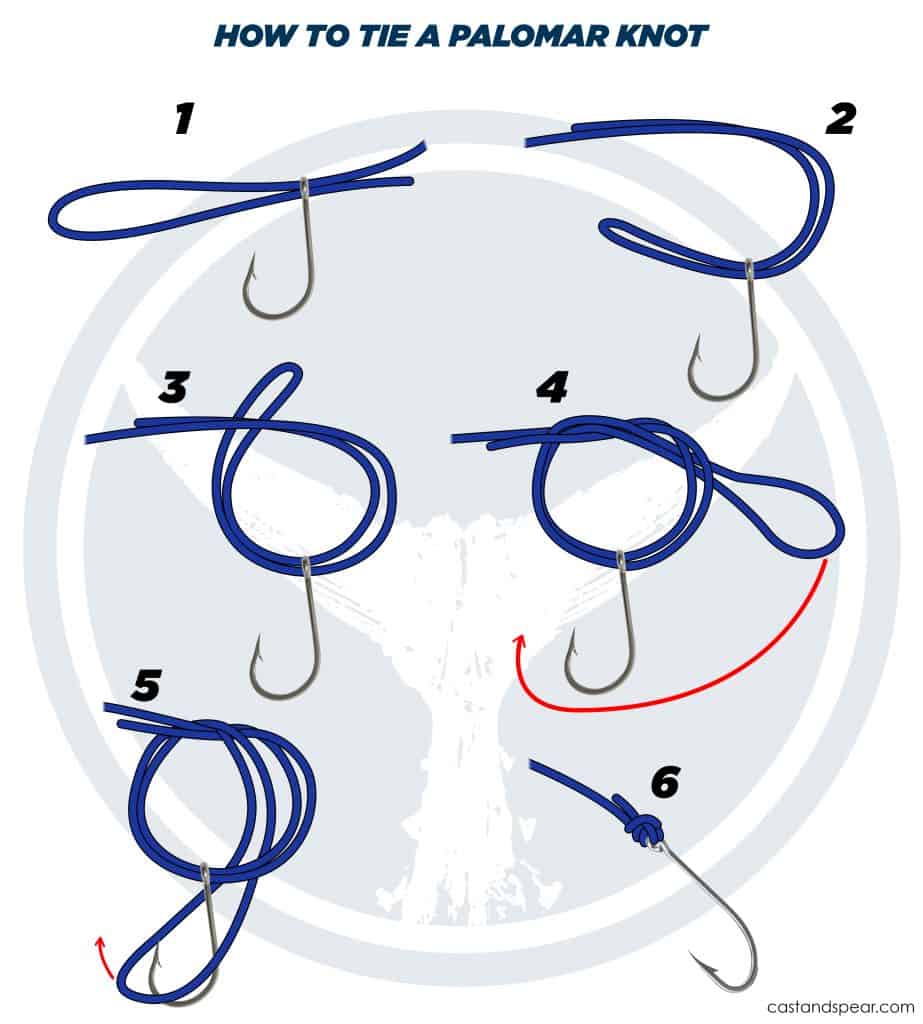
Similarly easy to an overhand knot, the Palomar knot is impressively strong due to its double line type knot. It holds well with fluorocarbon and braid fishing lines when tied to spinnerbait lures.
Double-line means taking the end of the fishing line or tag and making a loop. To guide you, make a double line first. Doubling the line means taking the end of the fishing line or tag and making a loop, similar to folding something in half to make it. Then pass the line through the eye.
After that, make a second loop and tie an overhand knot. Here, you need to keep the first loop fairly long for the following step. Next, pass the first loop over the entire lure.
Then, wet the knot to lessen any friction when you pull on the end of the line. And finally, pull the whole thing to tighten it; You will end up with a nice, clean knot.
The San Diego Jam Knot
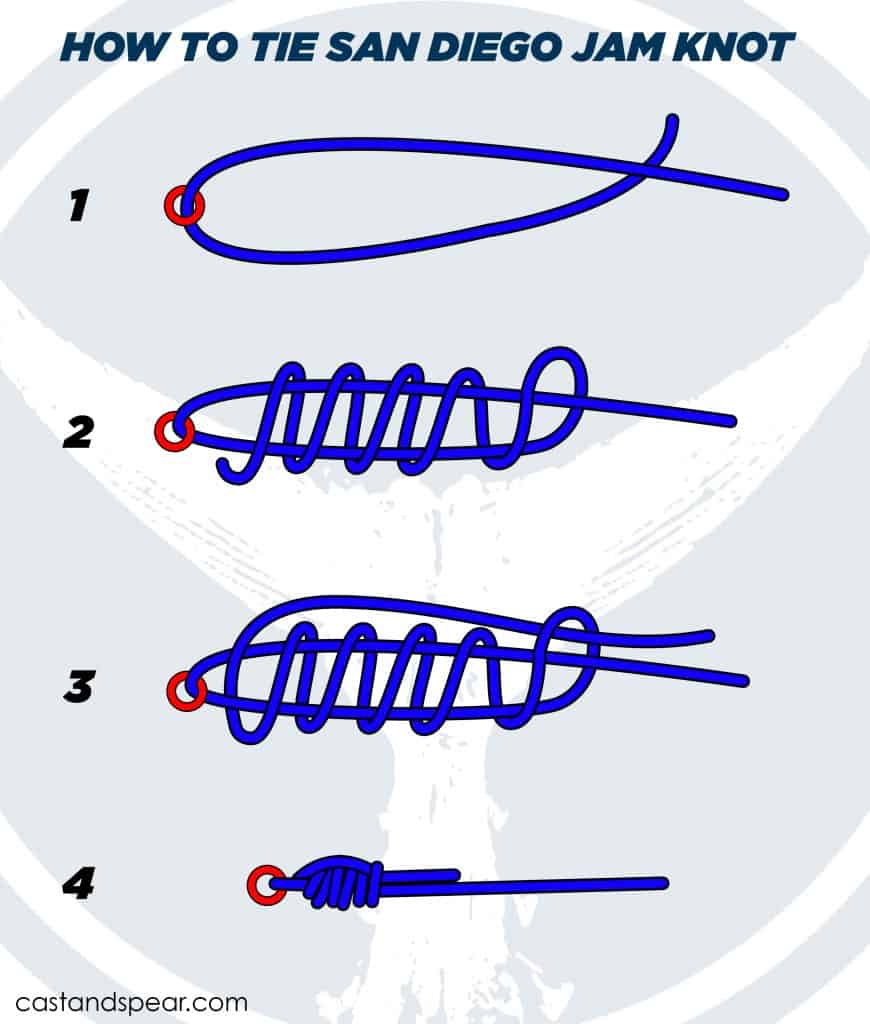
Next on the list is the San Diego Jam Knot, also known as the improved clinch knot. This knot is suitable for larger lures and all types of fishing lines.
To begin, attach the line to the eye. But instead of having one small loop, you make another by making the line end reach the eye, making an S shape, roughly about 4-5 inches from end-loop to end-loop.
The following step is to wrap the line end around the rest of the fishing line to make a dumbbell shape. The end loops should look a lot smaller.
Then, the end of the fishing line or tag should be closer to the lure by now.
After that, take the tag and pass it through the loop closest to the eye, then through the other loop.
And to finish off, you can wet the knot and pull the rest of the end of the line and the mainline alternately. Feel free to cut off any excess fishing line.
The Trilene Knot
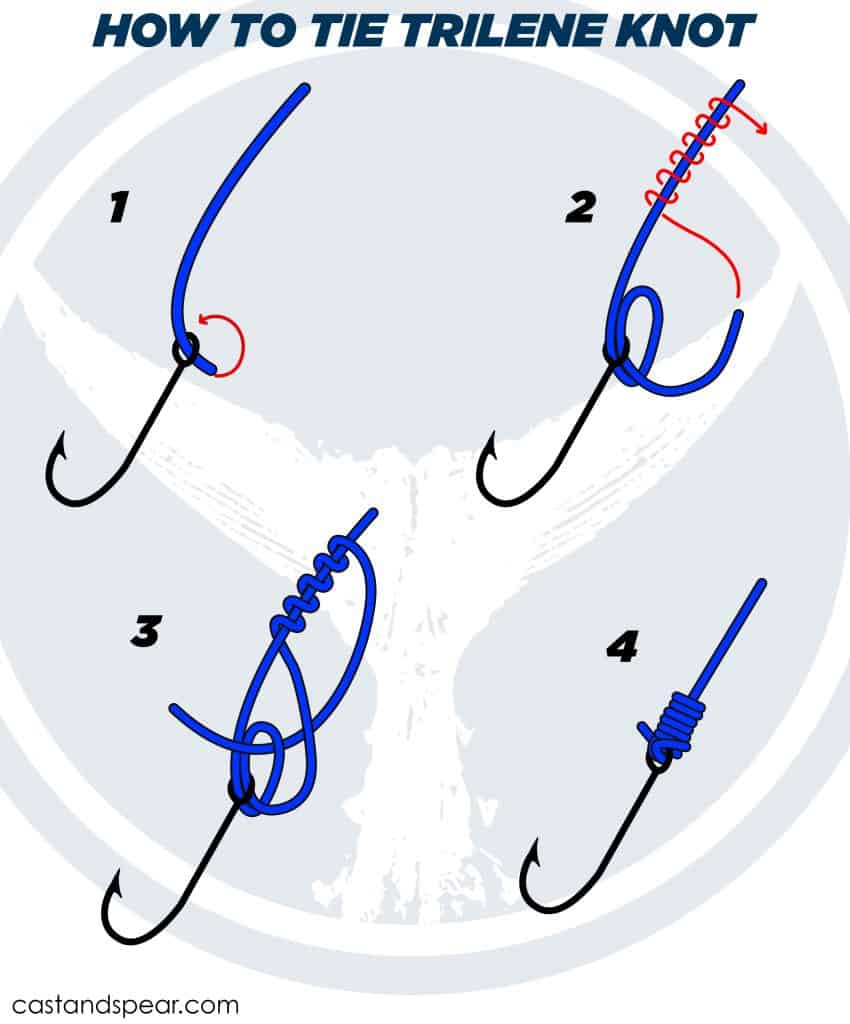
The Trilene Knot is also called the Two Turn Clinch. Often used in joining monofilament or fluorocarbon, this knot has been proven reliable in most cases when you need a knot.
The knot is so sturdy that it doesn’t give out whenever the fishing line is under intense tension. Instead, it tightens even more and snaps the line. To start tying, follow the process below.
Grab the end of the fishing line or tag and pass it through the eye. You’ll be doing this twice to make a loop de loop.
The next step is to wrap the tag around the fishing line around five times, leading away from the lure to make a balloon shape. Make sure to leave allowance for the next step.
Then, make the tag end pass through the loop de loop, and finally, hold the end of the line in place and pull gently to tie tightly.
Conclusion
Knowing how to tie these knots is pretty much a standard for using spinnerbaits to catch fish. Nonetheless, it’s important to remember that various factors determine how well you catch fish, like the line you use.
Award-winning champion and television personality Mike Iaconeli stated: “Start with a good line and then tie your knots carefully.”
This exhibits that progress is progress, just like these spinnerbait knots. It might be hard at first, but as you get familiar with it, you get a lot better at tying them.
Indeed, everyone has different takes when it comes to knots. So, test which of these is right for you!
Cast and Spear promote great fishing advice and tips to anglers of all levels. Our vision is to make it easy for anglers to become better at fishing.
To deliver on this promise, we are committed to providing the very best informational content on catching fish.



 Facebook
Facebook YouTube
YouTube